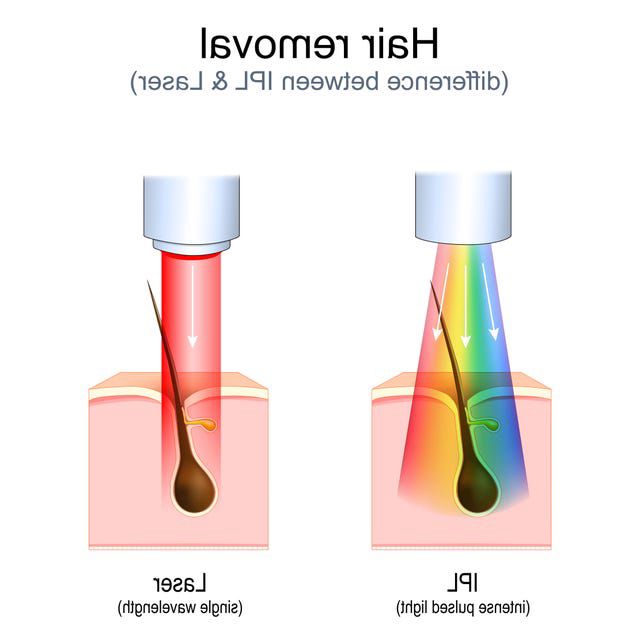Depilacja bikini z Philips Lumea - Gładkość i Komfort
Can I use Philips Lumea every week?
When starting your IPL treatments with Philips Lumea, our recommended treatment plan is that your first four treatments are done on a fortnightly basis rather than weekly, followed by monthly top ups to keep hair regrowth at bay. It is not recommended to use your Lumea more than a fortnightly basis as IPL is only effective when your hair is in the ‘growing’ phase, so doing your treatment weekly won’t improve or speed up the results you see.
Using Philips Lumea IPL, you can expect to see results from as early as your third treatment – with a 92% hair reduction when following the treatment plan1 (although this may vary from person to person). To get the most optimal results we recommend you follow the treatment plan and, if you tend to be a little forgetful like me, add these to your IPL app so you get those very helpful reminders when your next treatment is due.
Dowiedz się więcej o technologii depilacji IPL
Spersonalizowana depilacja światłem
z unikalną technologią
Sense IQ
Bezpieczna technologia IPL - na czym polega i jak działa
Lumea z serii 9900 jest skuteczna w przypadku włosów w odcieniu ciemnego blondu, brązowych i czarnych oraz odcieni skóry od bardzo bladej do ciemnobrązowej.
i długotrwałą depilację włosków w domu. Jak to działa? 1 - Delikatne impulsy światła docierają do cebulek włosów
Wymienne nasadki do depilatora IPL, to gwarancja depilacji dopasowanej do kształtów Twojego ciała
Największa nasadka do depilatora,
o zakrzywionej konstrukcji pozwala najbardziej efektywnie depilować duże obszary ciała takie jak nogi, ręce czy brzuch.
Porównanie depilatorów światłem Philips Lumea
Philips Lumea BRI977/00
IPL Series 9900
Philips Lumea BRI973/00
IPL Series 9900
Technologia SenseIQ
Skuteczność
Liczba nasadek
Czujnik Smart Skin
Zasilanie
Skuteczność dla typów skóry
Żywotność lampy**
*Średnia redukcji owłosienia po 12 zabiegach: 86% na łydkach, 70% na okolicach bikini, 67% na obszarach pod pachami.
** Obliczono w przypadku stosowania na dolnej części nóg, w okolicach bikini, pod pachami i na twarzy,żywotność lampy nie rozszerza 2-letniej gwarancji firmy Philips.
Tak. Urządzenia Philips Lumea można używać przez cały rok, także latem. Trzeba jednak podjąć specjalne środki ostrożności przed opalaniem i po nim. Mówiąc o opalaniu, mamy na myśli intensywne kąpiele słoneczne. Można być trochę opalonym po prostu w wyniku przebywania na zewnątrz.
Opalanie przed użyciem urządzenia Philips Lumea:
* Po wykonaniu zabiegu z Philips Lumea odczekaj 2 dni przed opalaniem.
* Zanim użyjesz urządzenia Philips Lumea, odczekaj co najmniej 2 tygodnie od czasu zakończenia opalania.
* Nie używaj urządzenia Philips Lumea w przypadku poparzenia słonecznego skóry do momentu jego ustąpienia.
* Pamiętaj, że każdy sposób opalania powoduje przyciemnienie skóry.
* Zawsze sprawdzaj informacje zawarte w tabeli z zalecanymi kolorami skóry i włosów, aby w razie potrzeby wybrać niższe ustawienie intensywności światła w celu uniknięcia wystąpienia reakcji skórnych i skutków ubocznych.
Opalanie po użyciu urządzenia Philips Lumea:
* Bezpośrednio po zabiegu skóra jest bardziej wrażliwa.
* Przed wystawieniem poddanej zabiegowi skóry na działanie promieni słonecznych poczekaj co najmniej 24 godziny lub do czasu, aż zaczerwienienie skóry zniknie całkowicie.
* Wychodząc na słońce, obszary ciała poddane zabiegowi należy przez 48 godzin smarować kremem z filtrem SPF 50.
wid=144&hei=101"wid=144&hei=101" />You are about to visit a Philips global content page
Wypukła nasadka dopasowana do trudno dostępnych obszarów, idealnie sprawdzająca się
w przypadku depilacji pach.
You are about to visit a Philips global content page
Małe, płaskie okienko nasadki do depilacji twarzy pozwala precyzyjnie wydepilować obszar nad ustami, brodę czy okolice żuchwy. Jest dodatkowo wyposażona
w ciemnoczerwony filtr, który stanowi dodatkową ochronę dla delikatnej skóry twarzy.
You are about to visit a Philips global content page
2 - Mieszek włosowy zostaje osłabiony, a włosy wypadająPhilips lumea depilacja bikini
Uživaj u 12 mjeseci* glatke kože bez dlačica
uz Philips Lumeu IPL
Uz Philips Lumeu IPL zaboravite na bolne i kratkotrajne metode uklanjanja dlačica i očekujte više!
Uživanje u 12 mjeseci* svilenkasto glatke kože bez dlačica poput one iz salona moguće je postići iz udobnosti svoga doma.
*Prosječno uklanjanje dlačica nakon 12 tretmana: 86% na potkoljenicama, 70% na bikini području, 67% na pazusima
PHILIPS Philips Lumea IPL Hair Removal 9000 Series - Hair Removal Device with SenseIQ Technology, 4 Attachments for Body, Face, Bikini and Underarm, Cordless Use (Model BRI957/00)
With the Philips Lumea 9900 series you can also now ‘Try and Buy’ the product and spread the cost over 12 months and can cancel at any time if they are not fully satisfied, which is helpful for those who aren’t quite sure if IPL is the right choice for them.

Philips Lumea Prestige review: ultimate at-home IPL
Looking for a cordless and powerful IPL machine? Read our Philips Lumea Prestige review now!
The Philips Lumea Prestige is the brand's most powerful hair removal device, and is quite simply the best IPL machine on the market. It offers easy, pain-free at-home hair removal, with a number of smart features that make it stand out from the rest.
- - Doesn't work on all skin types (true of all IPL)
- - Quite heavy
Why you can trust T3
Our expert reviewers spend hours testing and comparing products and services so you can choose the best for you. Find out more about how we test.
We check over 250 million products every day for the best pricesIf you're looking for smooth, hair-free skin, then the Philips Lumea Prestige is a flagship IPL machine which aims to give you long-lasting results, safely, from your own home.
I've spent the last two years zapping my legs, and other body parts, in order to properly review Philips Lumea Prestige, and these are my thoughts…
- Best IPL machine: effective laser hair removal for men and women
- Find the best Philips Lumea IPL deals

 U nas zapłacisz kartą
U nas zapłacisz kartą
